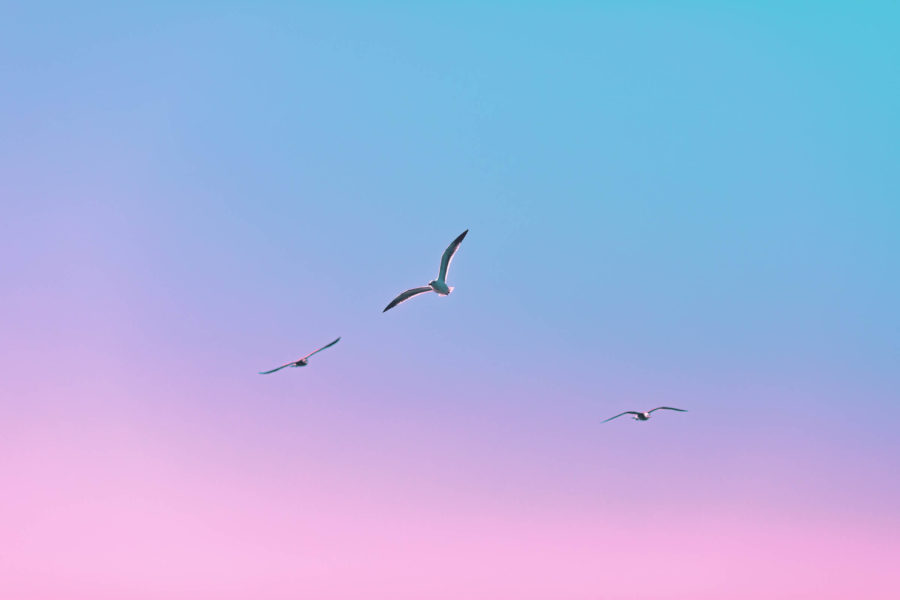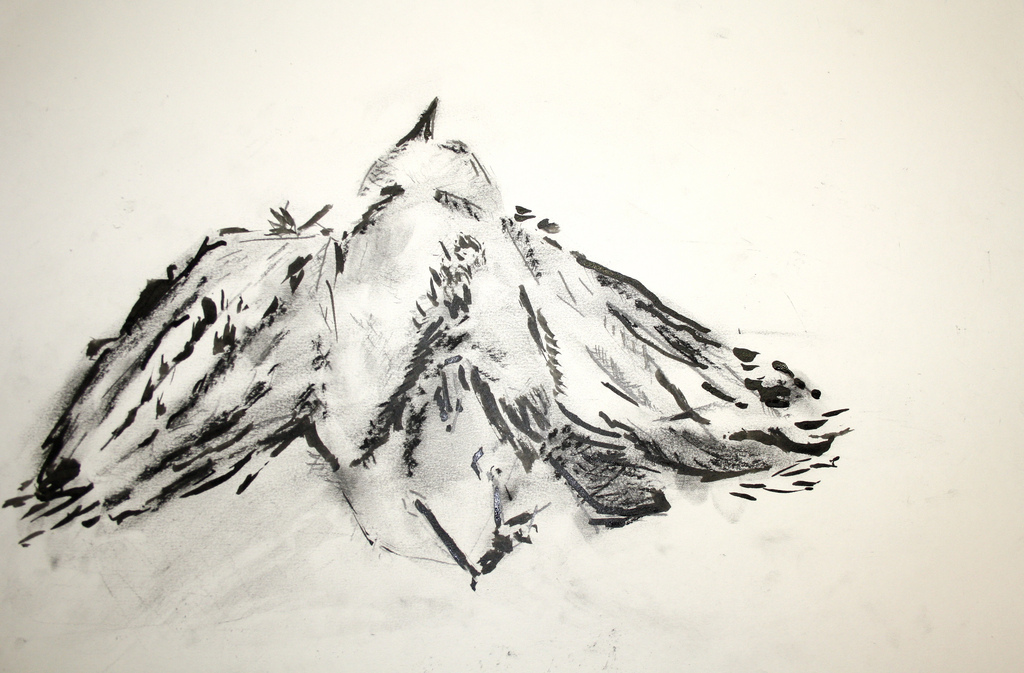Photo by Sophia.
I’ve been having an insightful shuffle through Mihaly Csikszentmihalyi’s book Creativity: The Work and Lives of 91 Eminent People. Mihaly is a seminal professor of Psychology and Management, and is the Founding Co-Director of the Quality of Life Research Center at Claremont. He writes:
“I have devoted 30 years of research to how creative people live and work, to make more understandable the mysterious process by which they come up with new ideas and new things. If I had to express in one word what makes their personalities different from others, it’s complexity. They show tendencies of thought and action that in most people are segregated. They contain contradictory extremes; instead of being an individual, each of them is a multitude.”
Nine out of the ten people in me strongly agree with that statement. As someone paid to be creative, I sometimes feel kaleidoscopic in my views or opinions, and that “multitude” of expressions sometimes confuses those around me. Why does that happen? My thoughts make cohesive sense to me, yet others sometimes feel that I am contradicting myself or switching positions. What is wrong with me?
Mihaly describes 9 contradictory traits that are frequently present in creative people:
01
Most creative people have a great deal of physical energy, but are often quiet and at rest. They can work long hours at great concentration.
02
Most creative people tend to be smart and naive at the same time. “It involves fluency, or the ability to generate a great quantity of ideas; flexibility, or the ability to switch from one perspective to another; and originality in picking unusual associations of ideas. These are the dimensions of thinking that most creativity tests measure, and that most creativity workshops try to enhance.”
03
Most creative people combine both playfulness and productivity, which can sometimes mean both responsibility and irresponsibility. “Despite the carefree air that many creative people affect, most of them work late into the night and persist when less driven individuals would not.” Usually this perseverance occurs at the expense of other responsibilities, or other people.
04
Most creative people alternate fluently between imagination and fantasy, and a rooted sense of reality. In both art and science, movement forward involves a leap of imagination, a leap into a world that is different from our present. Interestingly, this visionary imagination works in conjunction with a hyperawareness of reality. Attention to real details allows a creative person to imagine ways to improve them.
05
Most creative people tend to be both introverted and extroverted. Many people tend toward one extreme or the other, but highly creative people are a balance of both simultaneously.
06
Most creative people are genuinely humble and display a strong sense of pride at the same time.
07
Most creative people are both rebellious and conservative. “It is impossible to be creative without having first internalized an area of culture. So it’s difficult to see how a person can be creative without being both traditional and conservative and at the same time rebellious and iconoclastic.”
08
Most creative people are very passionate about their work, but remain extremely objective about it as well. They are able to admit when something they have made is not very good.
09
Most creative people’s openness and sensitivity exposes them to a large amount of suffering and pain, but joy and life in the midst of that suffering. “Perhaps the most important quality, the one that is most consistently present in all creative individuals, is the ability to enjoy the process of creation for its own sake. Without this trait, poets would give up striving for perfection and would write commercial jingles, economists would work for banks where they would earn at least twice as much as they do at universities, and physicists would stop doing basic research and join industrial laboratories where the conditions are better and the expectations more predictable.”
Sometimes what appears to be a contradiction on the surface is actually a harmony in disguise. My problem has been primarily one of communication. I am learning to let people know what I am thinking and why, and explaining myself in a way that helps them understand why I am discussing multiple perspectives instead of just cleanly stating my own. At first it might not make sense, but give me/us long enough, and it will.


Creativity is confusion, when u dont understand something u try to find meaning for it and that starts the creative process. Therefore creative people are creating sense. People want sense, and we make it for them.
I love how this describes so many of you creatives. I feel like everyone considers themselves to be creative. haha essentially you have to be a paradox ?
So much of that is true, and there is a;so the point where creatives can be quite manic, where everything is either super fantastic, or horrendously devastating, and usually both on the same day. I’m sure that is why we create, to rejoice in the moments of amazingness or to wallow in our self pity. Both bring out extraordinary pieces of art that can resinate with others
Lovely article, rang true to my ears.
Life is a paradox… that’s what makes it so creative. most people have access to this but I would say that conditioning has ironed them into social constructs that fit in with the illusionary and projected ideas of who they are. It’s appears difficult to break away from this. But my understanding is that it is only the belief in your identity that keeps you in the story of the world. And this is always changing… so once there is a seeing that there is nothing to hold onto then the paradox becomes a welcomed way to be…. This is available to everyone (I said that twice) My own creative expressions break through when there is clarity, but also when there is much confusion. But it works best when I am not considering the end product… so to speak. Like where will this end up. Although this plays a part in the way that one is compelled to show or exhibit… but then again maybe not…. I once met an artist that had never shown his work. He said he did it for himself. I was intrigued to hear more. What appeared was a character that was quite cynical on one hand, but had a social drive for better things. Personally I thought he was quite intense, but that probably says more about my own characteristics. Thank you for evoking these ideas and thought. Have a super day 🙂
What an astonishing piece. Thank You.
I will use these observations in the classroom.
This is the light at the end of the tunnel for me. I am misunderstood. I do try to make my ideas clear, but my near family still don’t get me. They talk about non-sequitors and silliness. I accidentally cause pain. I feel it most days. I continue to resist pressure to stop my involvement in my passion. Maybe I’m actually slightly autistic. That hasn’t been suggested -yet. I am not alone in valuing my skills and creativeness . But I wouldn’t say anyone would put me in an “ARTS” category.
Thank you.
That’s my personality, an amalgamation of Chaos and Order. You reach into the chaos constantly to pull out an Idea. Whether or not the Idea sticks is how quickly you can contradict the idea in the mundane world. The ones which do not work you try out ways to make it work until you drop from exhaustion. The goal is to always have a couple of projects running alongside those that are mandatory for work, one might find success doing so. Now I have to project 3D figures in my head. Goodbye.
Now then, good thing I am an engineer and that my father is a professor in engineering, and his brain has much likeness to mine.